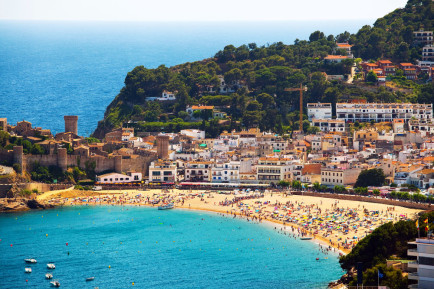
Russian tourists quickly fell in love with Spain, and as economic conditions are improving, numbers are rising again.
The roubles are rolling back into Spanish resorts following confirmation from the Association of Tour Operators of Russia (ATOR) that Russians’ on-off love affair with Spain is decidedly back on again…
As the Russian economy enjoyed something of a relative boom a few years ago, many of the country’s newly wealthy middle-class began exploring sea and sunshine resorts farther west than the traditional Russian strongholds usually found on the Black Sea coast.
And after sampling various spots all over the Aegean and Mediterranean Seas, decided almost en-masse that Spain was the nation for them, peaking in 2014, just a few months before the collapse in world oil prices severely damaged the Russian economy.
In the two years that have followed, wage cuts and an unfavourable exchange rate have made it much more difficult for Russians to travel abroad in anything like the numbers pre-2014, but it would appear that in the past few months that tide has turned a little.
ATOR says that the number of Russian tourists visiting Spain in 2016 is 3.3% higher than in 2015. And although that figure is still 34% below 2014’s record 883,000 tourists, represents a welcome turnaround for both the Spanish and Russian economies.
“Spain was the most popular destination for Russian travellers in January-September 2016,” said ATOR.
In 2014, Greece was briefly the most popular destination for Russian tourists, recording more than one million visitors in the first nine months of the year. But since the Greek economic crisis, Russians have largely stayed away, pushing Spain back to top spot ahead of Thailand, Cyprus and Turkey.
In terms of expenditure per head, Russian tourists have long been generous guests to Spain, spending an average of €104 per head per day, which is almost as much as the average British tourist.
The return of the Russian rouble will no doubt be welcomed in many Spanish resorts, but additional data released this week by the National Statistics Institute (INE) show that Spain has very little to worry about when it comes to attracting overseas visitors – numbers at the end of October were up 11% year-on-year, while the total expenditure by foreigners of €68,929 million in the first ten months represents a 16.3% increase, which means that not only are more people visiting Spain, but they are spending more too.
Brits have accounted for 21% of all foreign expenditure in Spain this year, followed by Germans with 17.1%.
 en
en



 Vlaams-Nederlands
Vlaams-Nederlands
0 Comments
Leave a Comment
DISCLAIMER
The opinions and comments expressed by contributors to this Blog are theirs alone and do not necessarily reflect the views of VIVA Homes Under the Sun Ltd, any of its associated companies, or employees; nor is VIVA to be held responsible or accountable for the accuracy of any of the information supplied.
Have you got something to say?